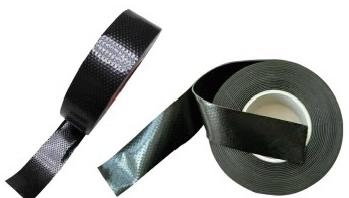How to Use Rubber Splicing Tape A Comprehensive Guide
In the world of electrical repairs and insulation, rubber splicing tape stands out as an essential tool. Known for its excellent insulating properties, flexibility, and durability, this type of tape is a favorite among both professionals and DIY enthusiasts. However, many people are unsure about how to use it effectively. In this article, we’ll delve into the details of rubber splicing tape, and provide a step-by-step guide on how to make the most of this valuable resource.
What is Rubber Splicing Tape?
Rubber splicing tape is a self-fusing, stretchy tape made from high-quality rubber compounds. It is designed to insulate, protect, and splice electrical cables, as well as repair damaged wiring and other components. This tape does not have an adhesive backing like traditional tape; instead, it bonds with itself when stretched and wrapped tightly. This unique property makes it ideal for creating a water-tight seal and providing electrical insulation.
Advantages of Using Rubber Splicing Tape
Before we dive into the usage instructions, let’s explore some of the advantages of rubber splicing tape
1. Waterproof Once applied correctly, rubber splicing tape creates a waterproof seal, which is essential in preventing moisture-related damage.
2. High Temperature Resistance It can withstand high temperatures, making it ideal for various applications, including outdoor use.
3. Durability Rubber splicing tape is resistant to abrasions and UV light, ensuring long-lasting performance.
4. Electrical Insulation With a high dielectric strength, it provides excellent electrical insulation, making it suitable for a variety of electrical applications.
Step-by-Step Guide to Using Rubber Splicing Tape
rubber splicing tape how to use

Now that we’ve established what rubber splicing tape is and its benefits, let’s walk through the steps to use it effectively.
Step 1 Gather Supplies Before you start, gather the necessary supplies - Rubber splicing tape - Scissors or a utility knife - Cleaning cloth (optional) - Safety gloves (optional)
Step 2 Prepare the Surface Ensure that the area to be taped is clean and dry. If necessary, use a cleaning cloth to remove any dirt, grease, or moisture. This will ensure better adhesion and a more effective seal.
Step 3 Cut the Tape Cut a length of rubber splicing tape. The length will depend on the size of the area you need to cover, but a general rule of thumb is to use at least twice the length of the area being spliced for optimal results.
Step 4 Apply the Tape Start by stretching the tape slightly as you apply it to the surface. Wrap it around the area, overlapping each layer by about half. This ensures that the tape fuses correctly and provides a thorough seal. Continue wrapping until the area is fully covered; make sure to keep the tape taut for the best results.
Step 5 Finish the Application Once you reach the end of the desired application area, cut the tape. Tuck the end of the tape under the last wrap to secure it. This will prevent any edges from peeling away over time.
Step 6 Allow to Fuse Depending on the conditions, give the tape some time to fuse—typically a few hours for optimal bonding to occur. The longer you leave it undisturbed, the stronger the bond will be.
Additional Tips
- Layering For areas with high stress or exposure to the elements, consider using multiple layers of tape for added security. - Temperature Considerations If you are applying tape in extreme temperature conditions, ensure it is rated for such use. - Storage Store rubber splicing tape in a cool, dry place to maintain its quality and ensure longevity.
Conclusion
Rubber splicing tape is an invaluable resource for anyone working with electrical wiring or requiring moisture resistance. By following the steps outlined in this guide, you can confidently use rubber splicing tape for a variety of applications. Remember always to prioritize safety and ensure that your work environment is conducive to effective repairs. With the right techniques, you can achieve professional-quality results and extend the lifespan of your electrical installations.
-
XIANGFAN Rubber Tape-Ultimate Solutions for All Your Insulation NeedsNewsJun.24,2025
-
XIANGFAN Rubber Tape-Protection for Industrial and Residential ApplicationsNewsJun.24,2025
-
XIANGFAN Rubber Tape: Superior Safety and Sealing for Demanding EnvironmentsNewsJun.24,2025
-
XIANGFAN Rubber Tape: Reliable Solutions for Every Electrical ChallengeNewsJun.24,2025
-
XIANGFAN Electrical & Industrial Tape: Powering Reliability Across IndustriesNewsJun.24,2025
-
XIANGFAN Electrical & Industrial Tape: Excellence in Every ApplicationNewsJun.24,2025
